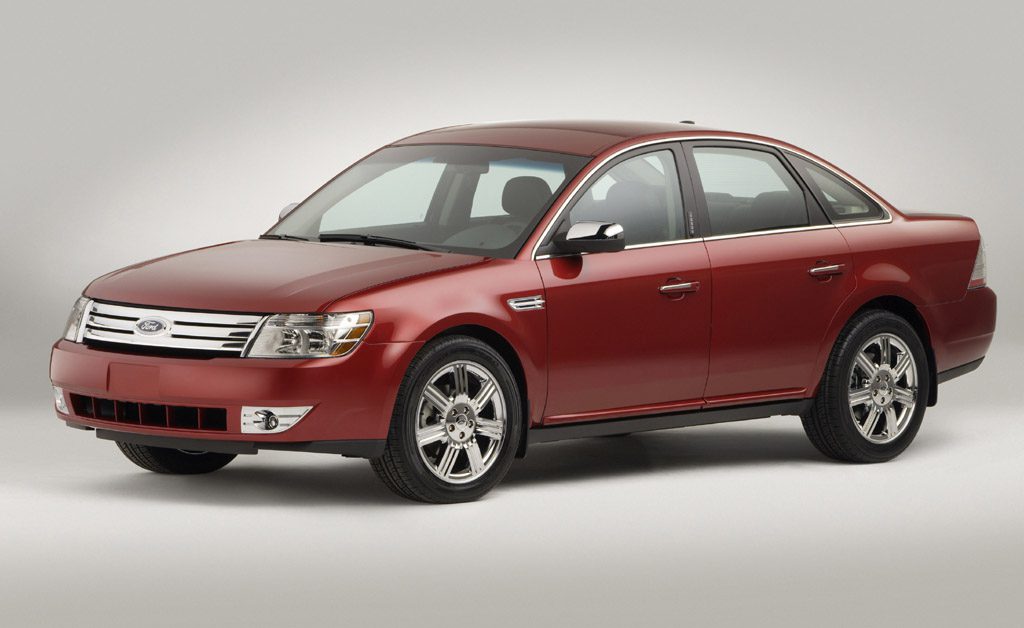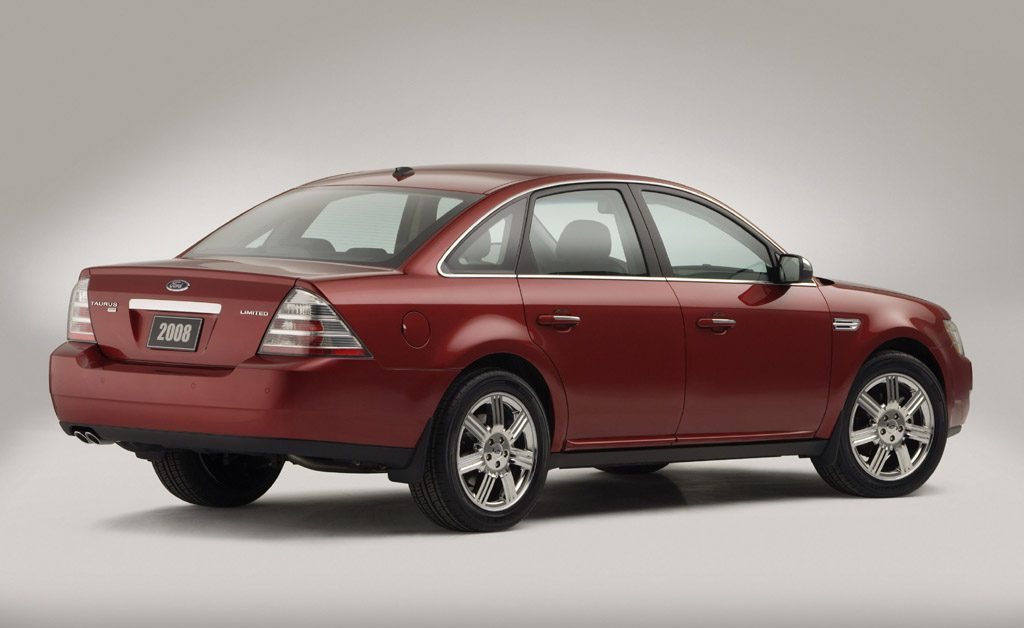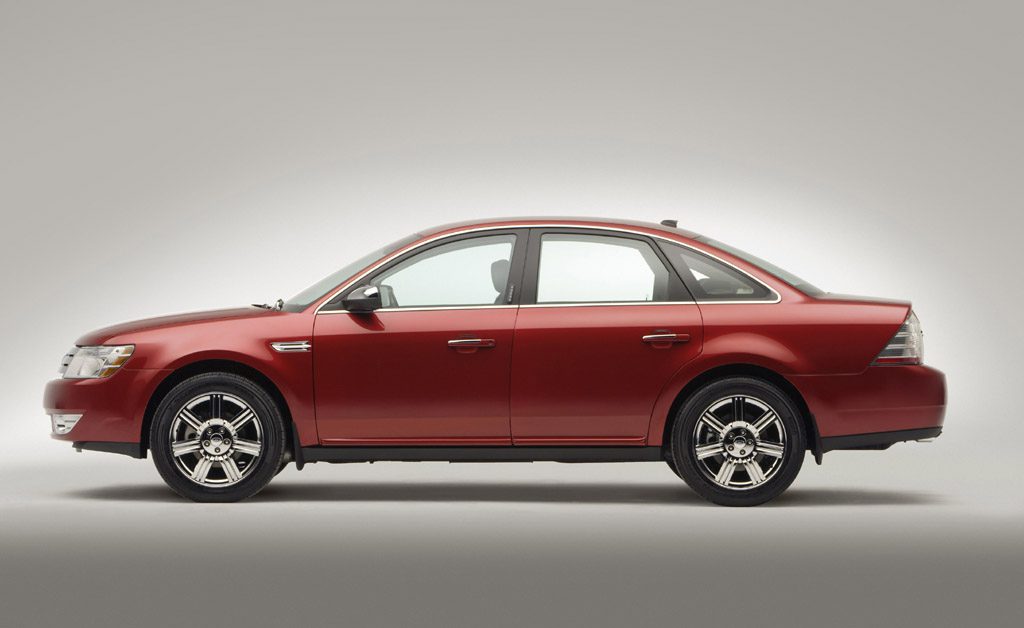| Large car; Built in USA |
|
|
| Good condition price range: $9,800 – $15,000* |

2008 Ford Taurus Front

2008 Ford Taurus Rear

2008 Ford Taurus Interior

2008 Ford Taurus Profile
| Pros: |
|
| Cons: |
|
The 2008 Taurus makeover fixed most of the old Five Hundred’s relatively few defects. Somewhat more refined than its predecessor, Taurus now offers fine acceleration, good fuel economy, and plenty of passenger space. Taurus might still trail the Chrysler 300 for eye appeal and the Toyota Avalon for refinement, but this Ford has a lot to offer those who need the room of a full-size sedan.
Overview
Taurus replaced the Five Hundred as Ford’s full-size sedan for 2008, reviving a name that had previously graced the company’s mid-size car. Though Taurus and Five Hundred were very similar, Taurus got freshened styling and more power. This large sedan shared a basic design with the similarly updated 2008 Mercury Sable (formerly Montego) and the Ford Taurus X SUV (formerly Freestyle). The old midsize Taurus/Sable sedans were now history.
Ford again offered SEL and Limited models with either front-wheel drive or all-wheel drive, but a 263-horsepower 3.5-liter V6 replaced the 203-horsepower 3.0 V6 as the sole engine. A six-speed automatic transmission was standard; the prior continuously variable transmission (CVT) was dropped. Standard safety features included antilock brakes, traction control, curtain side airbags, and front side airbags. An antiskid system was optional for the Limited sedan. A navigation system and DVD entertainment were also optional. Also available was Ford’s Sync, a voice-activated interface for cell phones and digital music players. Taurus rivals included the Buick Lucerne, Chrysler 300, and Toyota Avalon.
Yearly Updates
| 2009 Taurus A new entry-level SE model joined the Taurus lineup for 2009. All models could have all-wheel drive or front-drive, and an antiskid system became standard. Satellite radio now was standard on SEL and Limited sedans, but DVD entertainment no longer was offered. |
